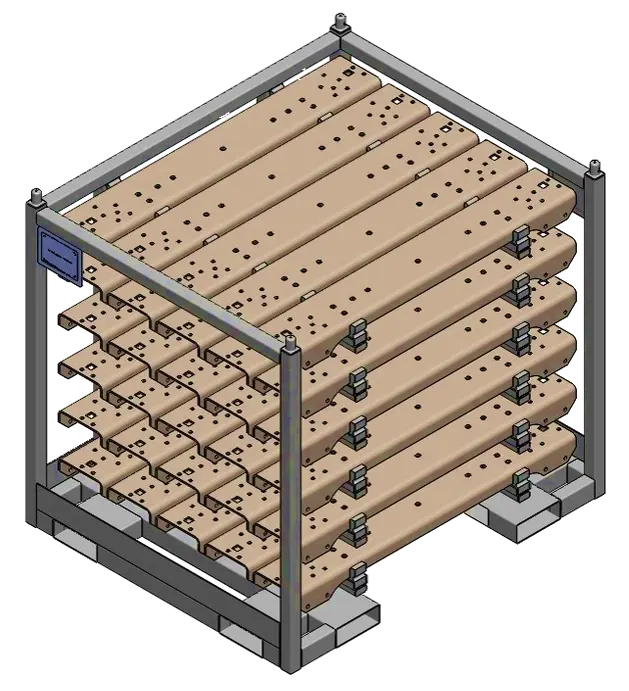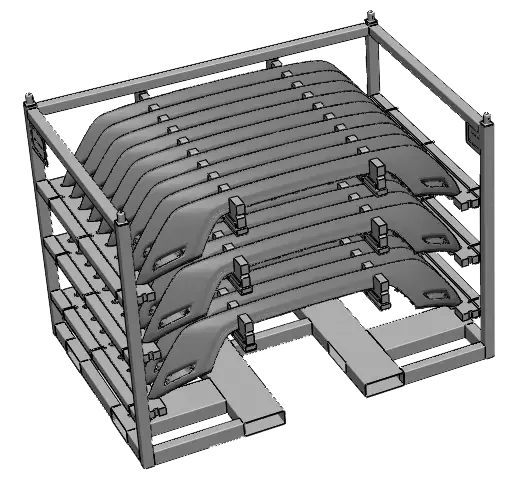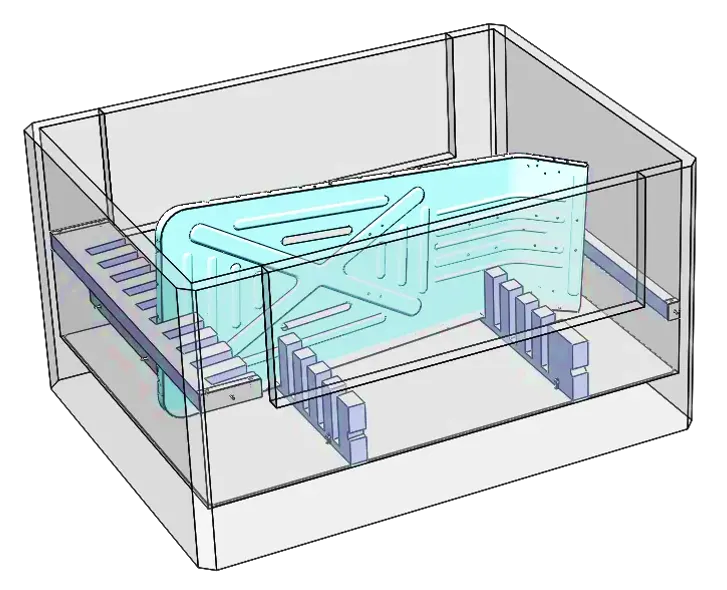Explore innovative designs, practical applications, and the numerous benefits of utilizing a wine barrel rack for your facility.
Read MoreAutomotive Packaging: Protect and Transport
What is Automotive Packaging?
Automotive packaging refers to the process of designing, creating, and implementing packaging solutions specifically tailored to the needs of the automotive industry. It involves the careful selection of packaging materials, design techniques, and supply chain integration to ensure the safe and efficient transportation of automotive components and products.

The Importance of Automotive Packaging
Effective automotive packaging plays a crucial role in enhancing efficiency in the automotive industry. It goes beyond mere protection and shipping of automotive components and products. Here are a few key reasons why automotive packaging is important:
-
Ensuring Safety and Protection: Automotive components are often delicate and sensitive to external factors. Proper packaging techniques and material choices result in safe transportation and protection against damage, ensuring the integrity of the components.
-
Improving Supply Chain Efficiency: Well-designed packaging solutions optimize space, reduce packaging waste, and enable streamlined handling and transportation. Ultimately, this will lead to improved supply chain efficiency, lower transportation costs, and reduced lead times.
Types of Automotive Packaging
There are various types of packaging used in the automotive industry, depending on the nature of the components or products being transported. Some common types of automotive packaging include:
-
Bulk Packaging: This type of packaging is used for transporting large quantities of components, such as nuts, bolts, or fasteners. Essentially, the main design function for this packaging style is to maximize space utilization and protect the components during transit.
-
Crate Packaging: Crates are commonly used for shipping heavier and larger automotive parts, such as engines or transmissions. Also, they provide sturdiness and protection against impact during transportation.
-
Foam Packaging: Foam packaging is widely used to protect delicate automotive components, such as glass or electronic parts. Therefore,it provides cushioning and shock absorption to prevent damage during transit.
-
Corrugated Boxes: Corrugated boxes are versatile and used for various automotive components, ranging from smaller parts to medium-sized components. They offer protection, stackability, and ease of handling.
-
Returnable Packaging: This type of packaging includes reusable containers, racks, or pallets. It is commonly used for components that require multiple shipments within the automotive supply chain. In addition, returnable packaging reduces waste and costs associated with single-use packaging.
How Does Automotive Packaging Work?
Automotive packaging involves a series of processes aimed at designing and implementing efficient packaging solutions. Here is a high-level overview of how automotive packaging works:
-
Analyzing Packaging Requirements: This step involves understanding the specific packaging requirements based on product specifications and constraints.
-
Selecting Suitable Packaging Materials: Moving forward, it is imperative to select packaging materials that are suitable in terms of environmental impact, protection requirements, and longevity.
-
Designing Packaging Solutions: Collaborating with packaging experts, designers create packaging solutions that optimize space, ensure safety, and provide ease of handling.
-
Testing and Quality Assurance: Comprehensive testing is conducted on packaging solutions in order to verify their functionality and adherence to automotive regulations and standards.
-
Supply Chain Integration: Effective packaging strategies integrate packaging into the overall supply chain process through collaboration with manufacturers and suppliers..
-
Continuous Improvement and Optimization: Monitoring, feedback loops, and analysis of packaging performance facilitate the identification of development opportunities and the exploration of emerging technologies and trends.

Benefits of Effective Automotive Packaging
Effective automotive packaging offers a range of benefits for both manufacturers and end-users. Let’s explore some key advantages:
1. Ensuring Safety and Protection
a. Packaging Material Selection: Choosing the right packaging materials ensures the safety and protection of automotive components during transit, minimizing the risk of damage.
b. Shock Absorption Techniques: Utilizing shock absorption techniques, such as foam inserts or airbags, protects delicate components from impact and vibrations during transportation.
c. Temperature Control Measures: By incorporating temperature control mechanisms, such as utilizing insulated packaging or temperature-sensitive materials, critical components that are subject to fluctuations in temperature are protected..
2. Improving Supply Chain Efficiency
a. Optimized Packaging Design: Efficient packaging design maximizes space utilization, reduces waste, and optimizes logistics, resulting in improved supply chain efficiency and cost savings.
b. Just-In-Time Delivery Concepts: Customized packaging solutions aligned with just-in-time delivery concepts enable smoother handling, quicker loading/unloading, and reduced lead times.
c. Streamlined Handling and Transportation: Well-designed packaging solutions improve handling and transportation, reducing the risk of damage and delays in the supply chain.
How to Implement Effective Automotive Packaging Strategies?
Implementing effective automotive packaging strategies requires careful planning and execution. Here are some key steps to consider:
1. Analyzing Packaging Requirements
a. Understanding Product Specifications: Detailed knowledge of product specifications helps identify the specific packaging needs and constraints.
b. Identifying Packaging Constraints: Consideration of factors such as weight, fragility, dimensions, and regulations ensures that the packaging meets the requirements.
2. Selecting Suitable Packaging Materials
a. Considerations for Durability: Opt for packaging materials that possess the capability to endure the severities of transportation, thereby guaranteeing the protection of components across the entirety of the supply chain..
b. Environmentally Friendly Options: Choose packaging materials that are environmentally friendly and align with sustainable practices to reduce the environmental impact.
3. Designing Packaging Solutions
a. Collaborating with Packaging Experts: Engaging with packaging specialists enables the application of their expertise and efficiency in the development of packaging solutions.
b. Incorporating Innovation and Efficiency: Embrace innovative packaging design techniques to maximize space utilization, reduce waste, and improve handling efficiency.
c. Optimal Use of Space: Design packaging solutions that efficiently use available space, considering factors such as stackability, nesting, and ease of handling.
4. Testing and Quality Assurance
a. Performance Testing: Conduct thorough testing to ensure the packaging’s ability to protect the automotive components and comply with relevant standards.
b. Compliance with Automotive Standards and Regulations: Follow the rules and guidelines set forth by the automotive industry to make sure the packaging satisfies the necessary requirements for quality and safety.
5. Supply Chain Integration
a. Collaboration with Manufacturers and Suppliers: Establish strong relationships with manufacturers and suppliers to align packaging processes with the overall supply chain for seamless integration.
b. Efficient Warehouse and Inventory Management: Improve inventory control and warehousing to guarantee prompt supply of packaging supplies and effective delivery.
6. Continuous Improvement and Optimization
a. Feedback Loop Implementation: Gather feedback from parties involved in the packaging process to identify areas for improvement and implement appropriate modifications.
b. Monitoring and Analyzing Packaging Performance: Regularly monitor and analyze packaging performance metrics to identify opportunities for optimization and efficiency enhancement.
c. Exploring New Technologies and Trends: Stay up to date on emerging technologies and trends in automobile packaging to discover innovative solutions that can further improve economy and sustainability.

Automotive Packaging Tools and Resources
The automotive industry has access to various tools and resources to support effective packaging strategies. Some common tools and resources include:
-
Packaging Design Software: Computer-aided design (CAD) software allows for 3D modeling and simulation of packaging designs, enabling efficient design iterations and optimization.
-
Packaging Material Suppliers: Numerous suppliers specialize in automotive packaging materials, providing a wide range of options to meet specific requirements.
-
Industry Associations and Conferences: Automobile industry groups and conferences provide a platform to stay updated on the most recent trends, innovations, and best practices in automobile packaging.
Best Practices for Automotive Packaging
Adhering to best practices in automotive packaging helps ensure optimal performance and effectiveness. Here are some key best practices to consider:
-
Collaboration: Encourage collaboration and communication among packaging specialists, manufacturers, suppliers, and other parties involved in the packaging process.
-
Lean Thinking: Embrace lean principles to eliminate waste, minimize errors, and optimize packaging processes.
-
Continuous Training and Improvement: Employees working in packaging should receive frequent training to stay up to date on the latest procedures and technological developments.
-
Documentation: Maintain proper documentation of all packaging processes, including material specifications, testing results, compliance certificates, and performance records.
-
Sustainability: Incorporate sustainability practices by using environmentally friendly materials, optimizing packaging design for minimal waste, and recycling or reusing packaging materials where possible.
Conclusion
Effective automotive packaging is a critical component of the automotive industry. It ensures the safety, protection, and efficient transportation of automotive components and products. By focusing on thorough analysis, suitable material selection, efficient design, and supply chain integration, manufacturers can enhance their efficiency and provide a positive customer experience. By implementing best practices, staying updated with industry trends, and continuously optimizing packaging strategies, automotive companies can achieve excellence in their packaging processes and gain a competitive edge.

Customize Your Own & Get a FREE Estimate!
Simply e-mail us at sales@plexformps.com with all your information
OR call us today & speak to one of our packaging professionals









